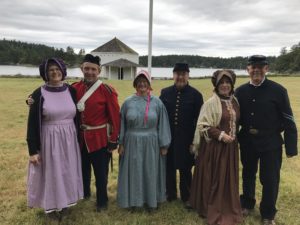
Tom and I do Living History because it is a way to connect people intellectually and emotionally to the national parks. Someone who might just walk through the Visitors Center will stop to talk to a soldier dressed in a red coat. Another guest who came to take a hike might decide to read more about history after seeing a presentation on woodworking. Living History pulls people in. Tom and I are always trying to find ways to connect people to the story. Here at English Camp, I have been weaving people into the story.
When we first came to English Camp, I noticed the spinning wheel and decided I had to learn how to use it. Several months later I impress people with my spinning skills. I learned the story of the weasel which sits beside it. People love hearing about “Pop Goes the Weasel” as they watch it spin. Because these items are fragile, kids aren’t allowed to touch them.
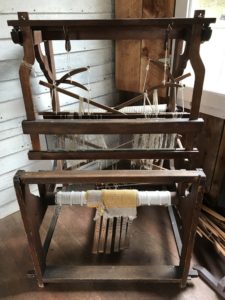
We also have a Danish loom that is over 300 years old. Although I have looked at it, I have no idea how to string it or use it. By the time I figured it out, it would be time to leave. But people still look at it and ask about it. I wanted to find a way to introduce people to weaving without using the historic loom.
After some research, I discovered hand looms. These are small wooden looms with nails on them that you hold in your hand. They are simple to use and easy to explain to children. We could make some and have them available for kids (and adults) to use. They couldn’t spin or use the weasel, but they could make a simple weaving project.
Moving away from historical accuracy, I bought two “Loopers and Looms” kits from Walmart.com. These are similar to the potholder looms I used when I was a kid except today they are made out of plastic. Each kit comes with five looms and hundreds of polyester loops.
As soon as Val saw them, she adopted them as her thing to do during our Living History time on Saturdays. She loved making potholders when she was a kid, and her enthusiasm is contagious. We spread a blanket out on the ground and put the looms and loops on it. Then we wait. Before too long a kid (or teenager or adult) will come over and ask if they can use them. We show them how to get started and then let them work, giving instruction as needed.
We are amazed at the number of kids and adults who have made potholders this summer. It takes at least an hour to make one, but every week we have about ten people who sit down and work until they have a finished, woven potholder. While they work we can tell them about spinning, weaving, and taking care of clothing in the 1800’s. Everyone who completes one is very pleased with themselves. Being able to take something home makes the visit more enjoyable and we know they will remember their visit to English Camp.
By the 1860’s (our time period) people were buying cloth made in mills. Going to the general store and buying yards of fabric made life much easier. Women continued to spin to make yarn for knitting but gradually weaving faded as a necessity and became a hobby. By weaving a simple potholder, people are introduced to the art of weaving and reminded of how different life used to be. I am pleased that we are weaving them into the story of English Camp and connecting them to the national parks.

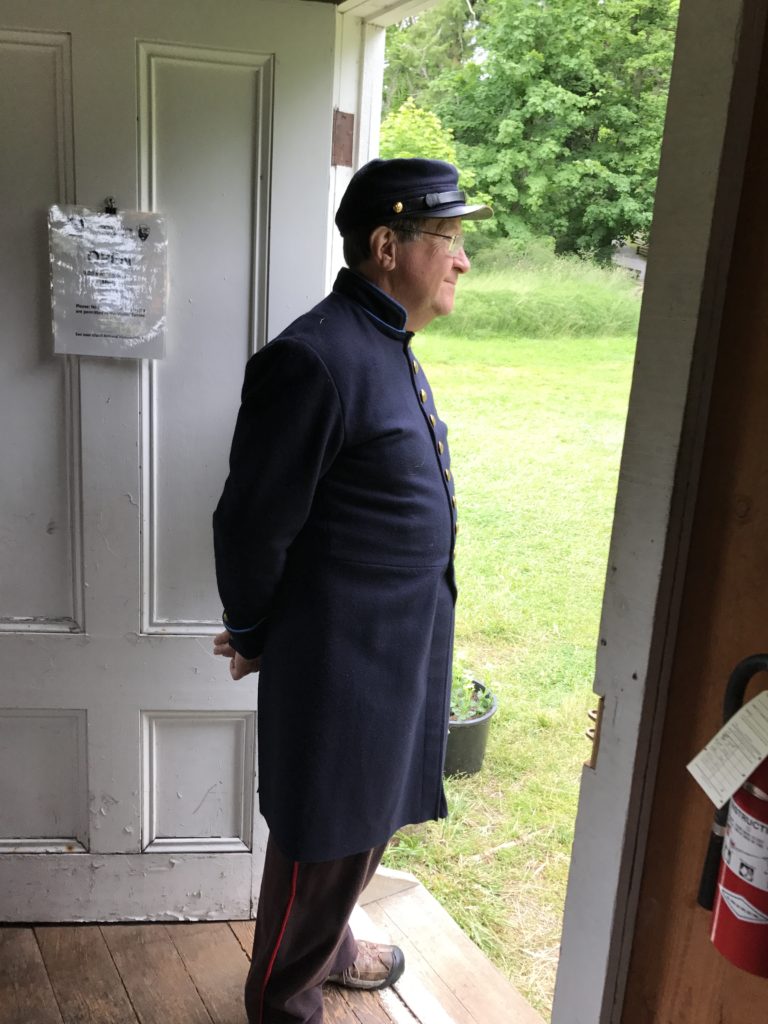
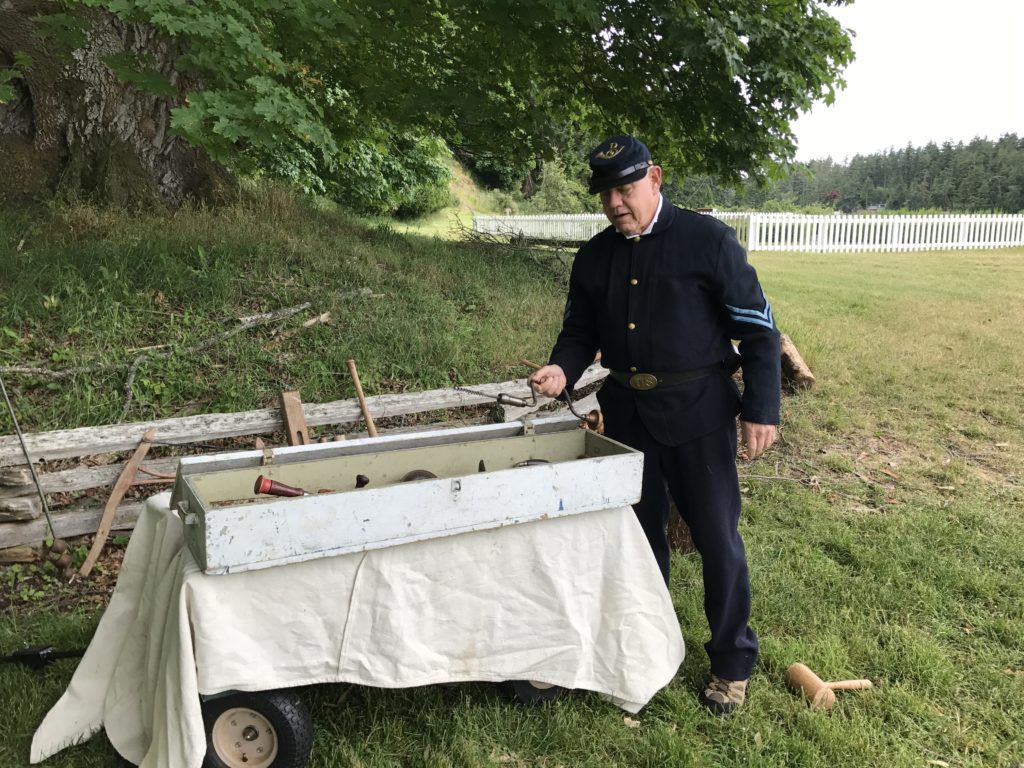
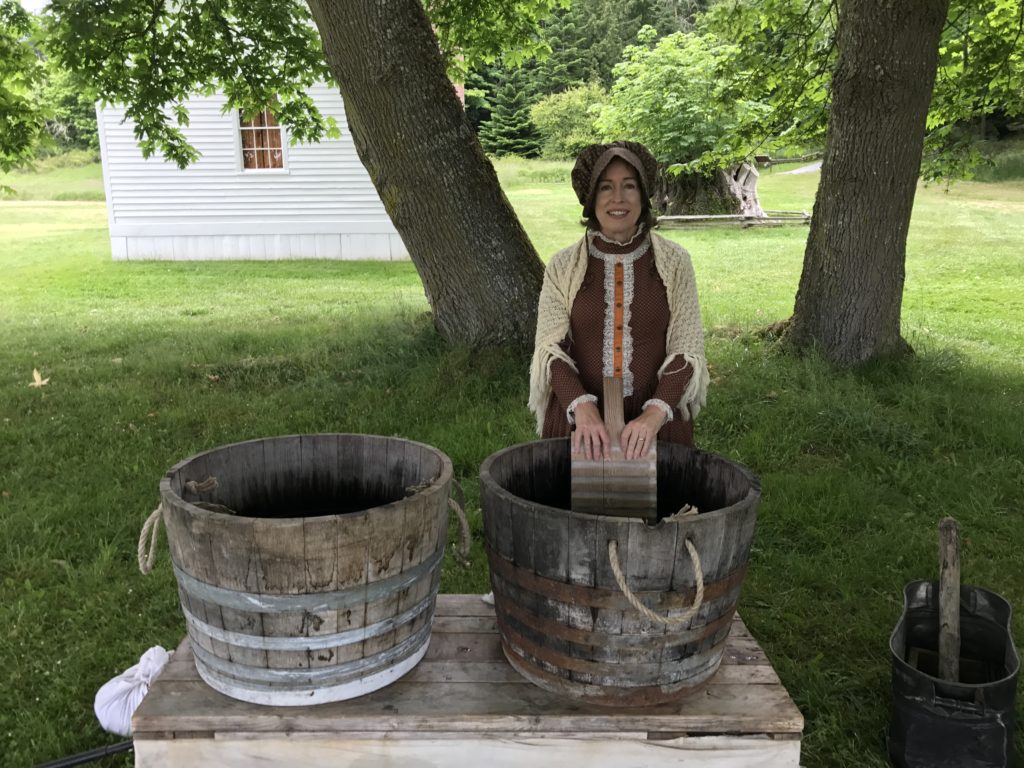
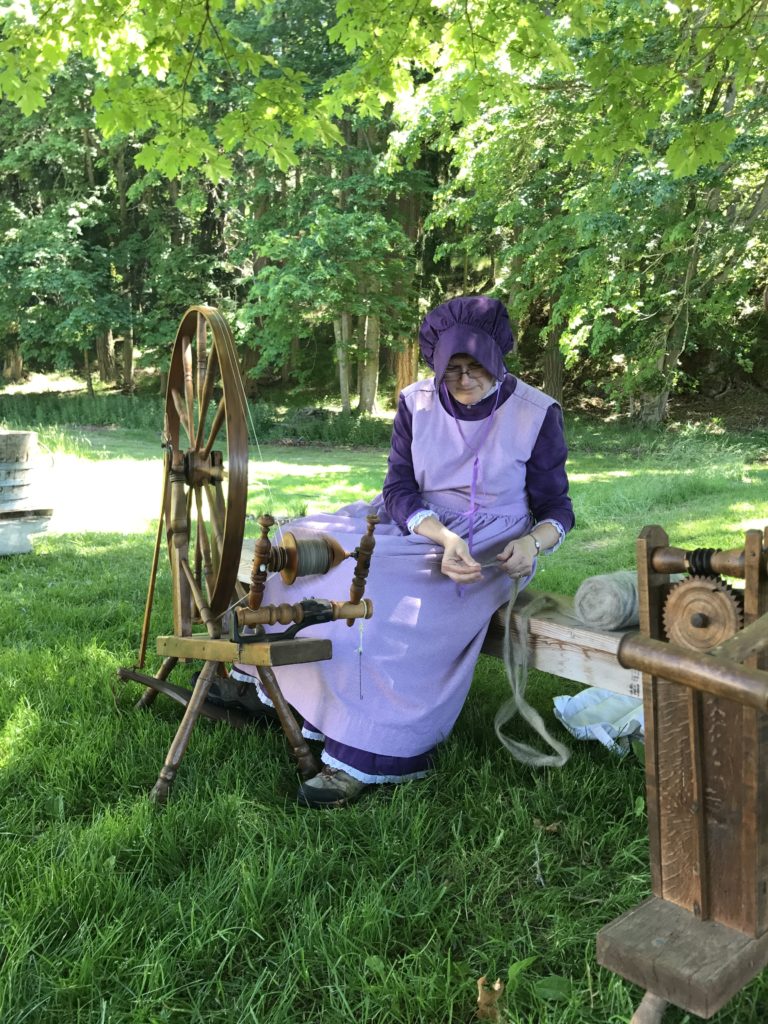
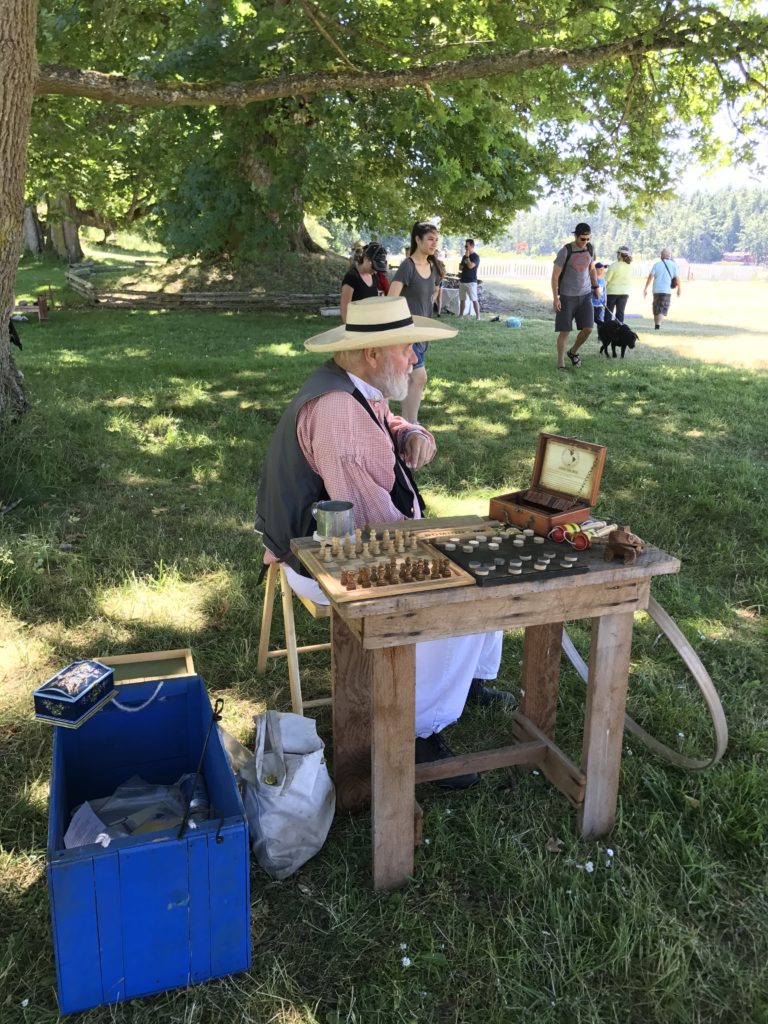
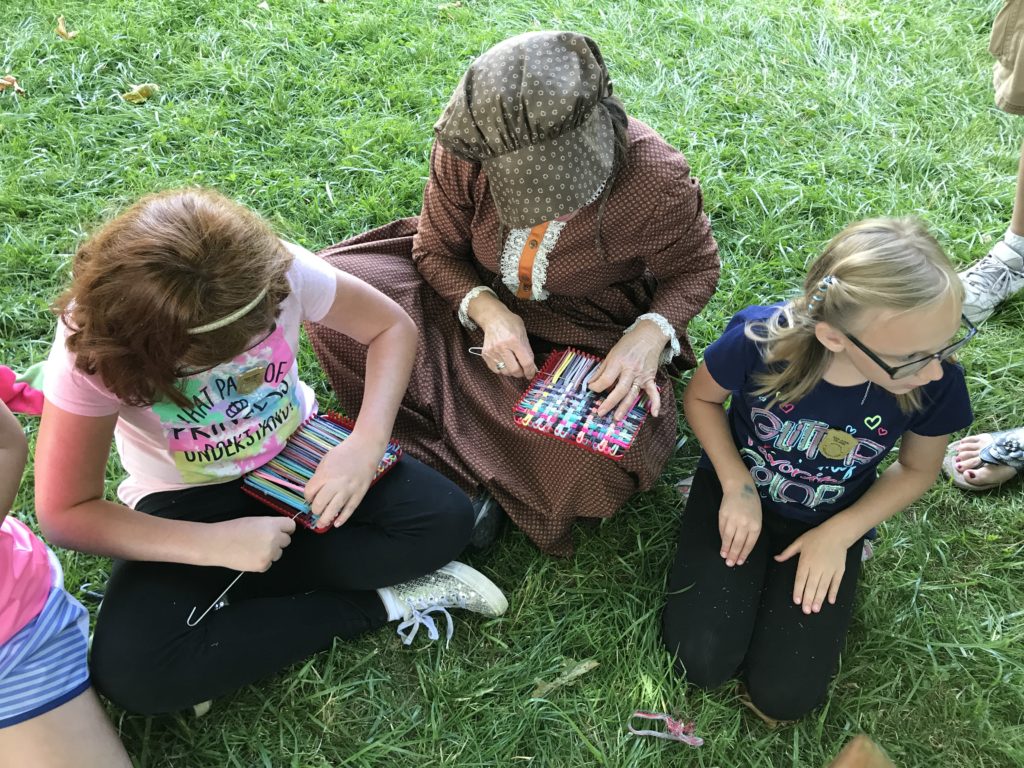
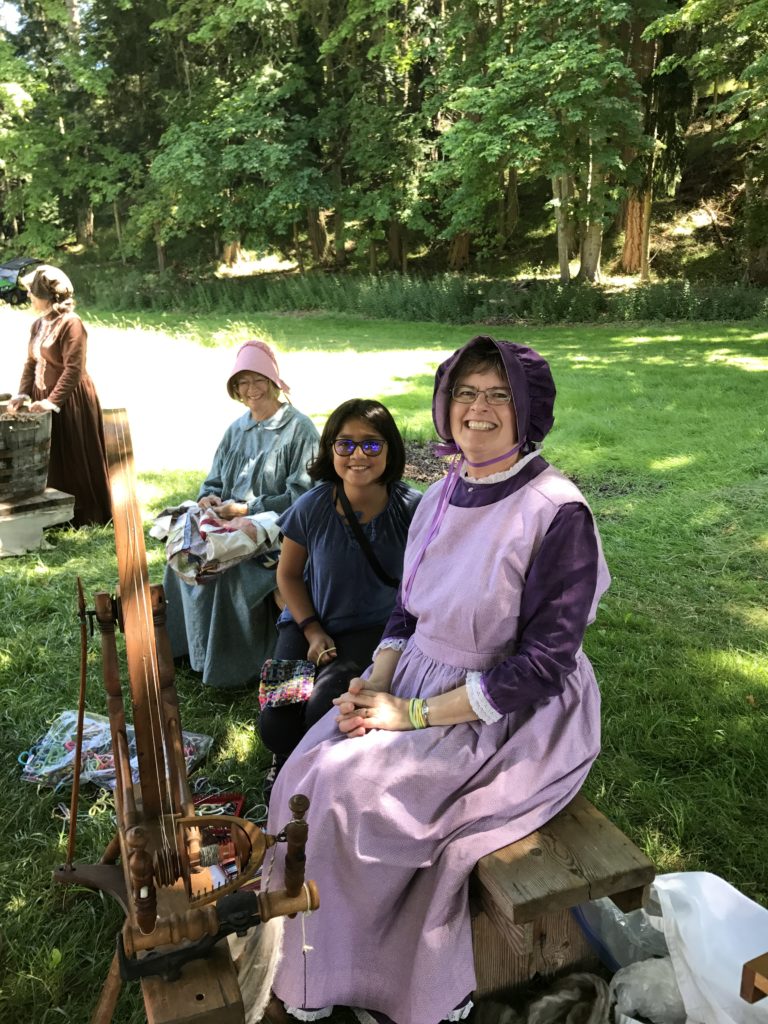
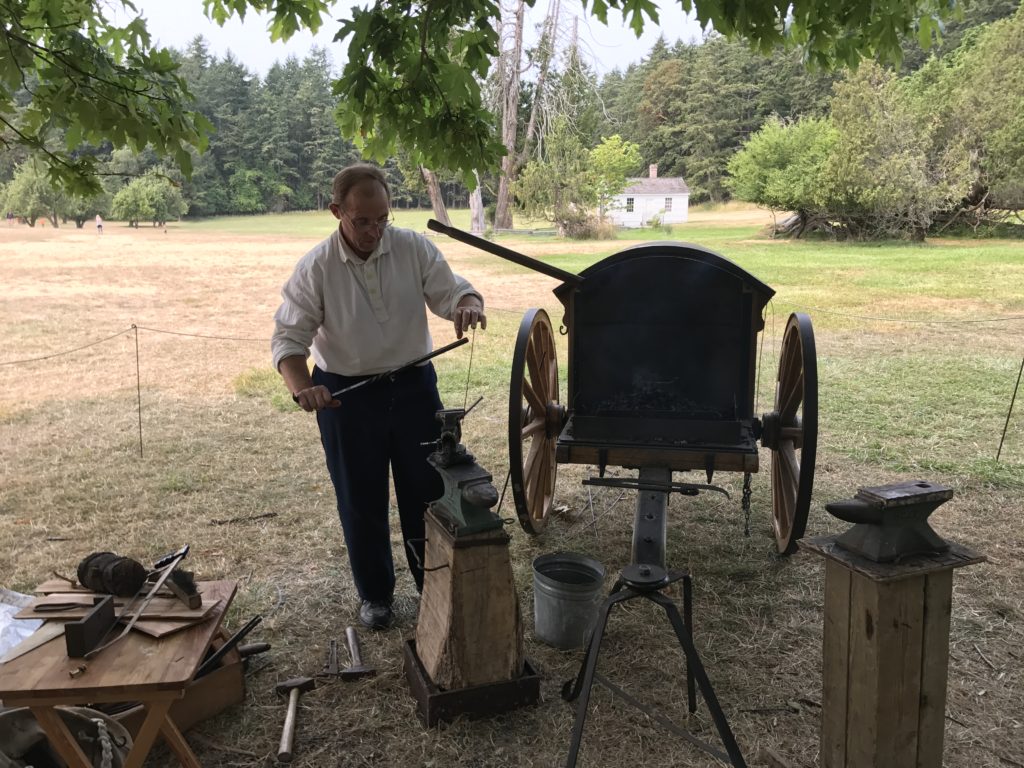
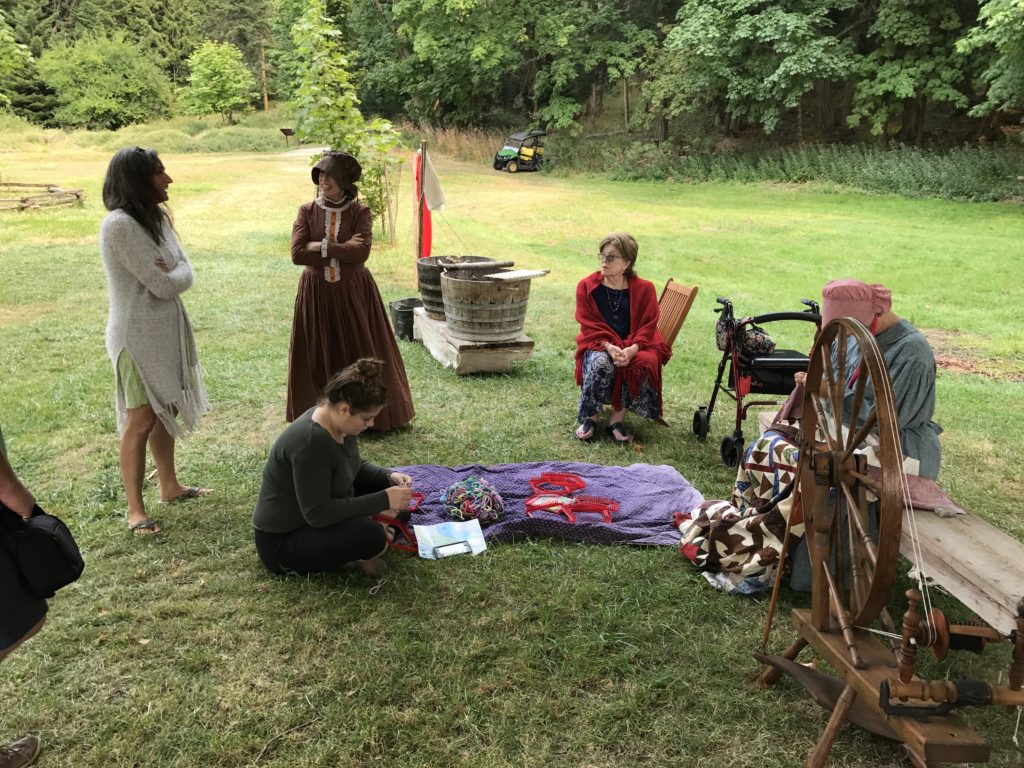
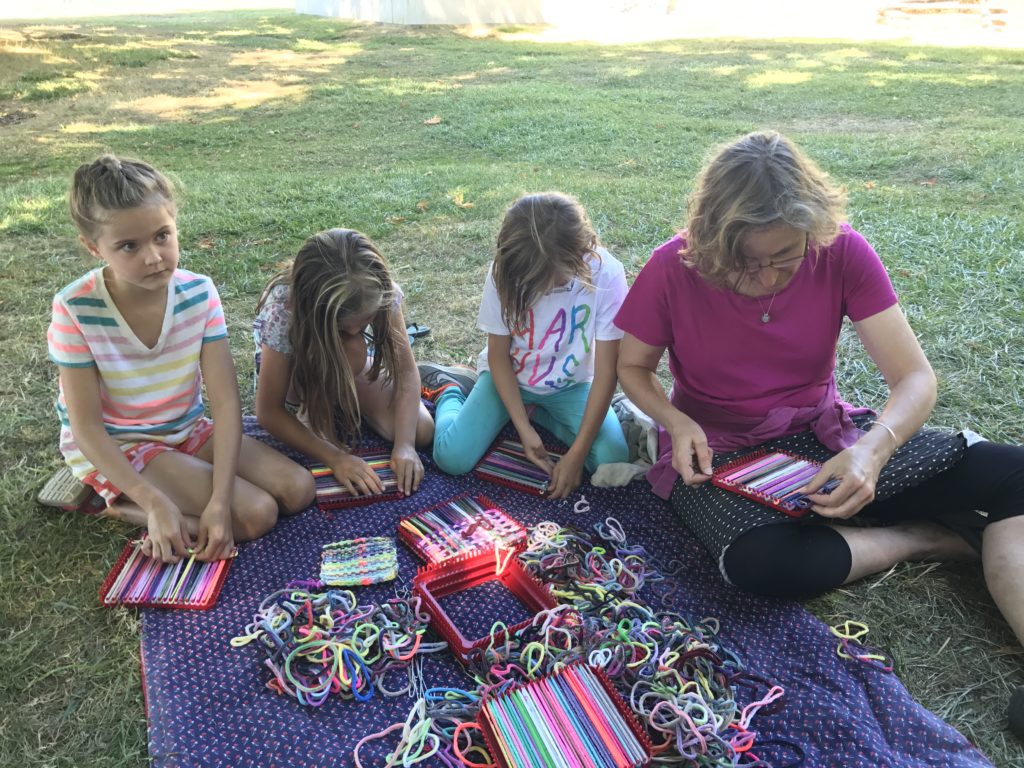
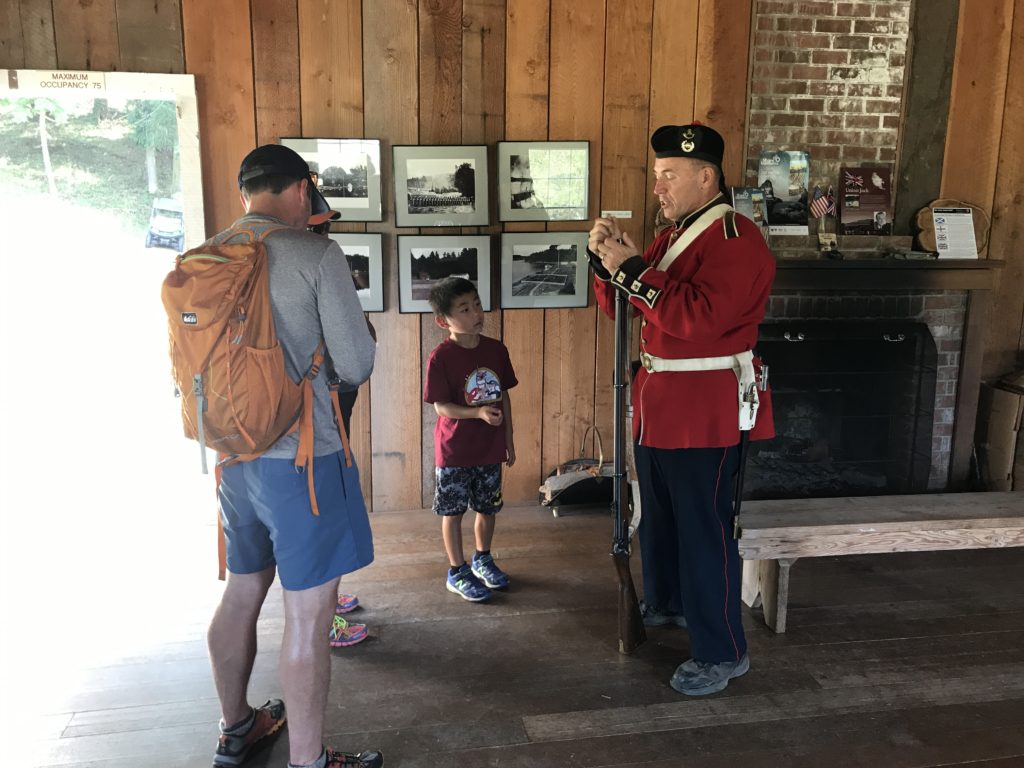
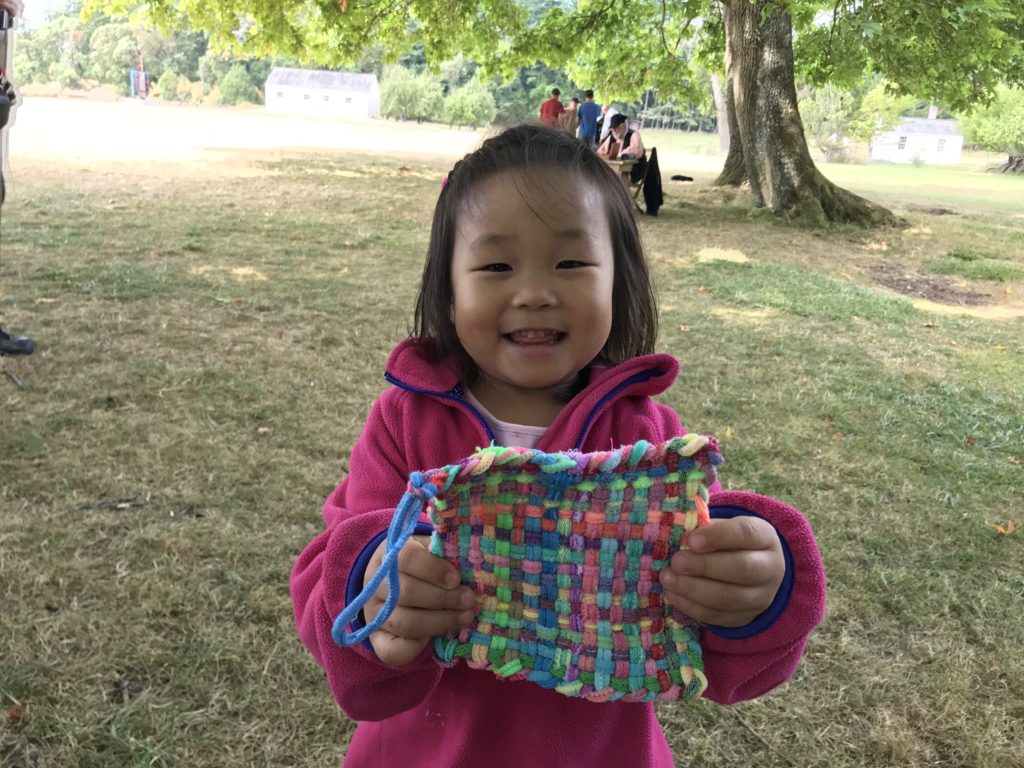
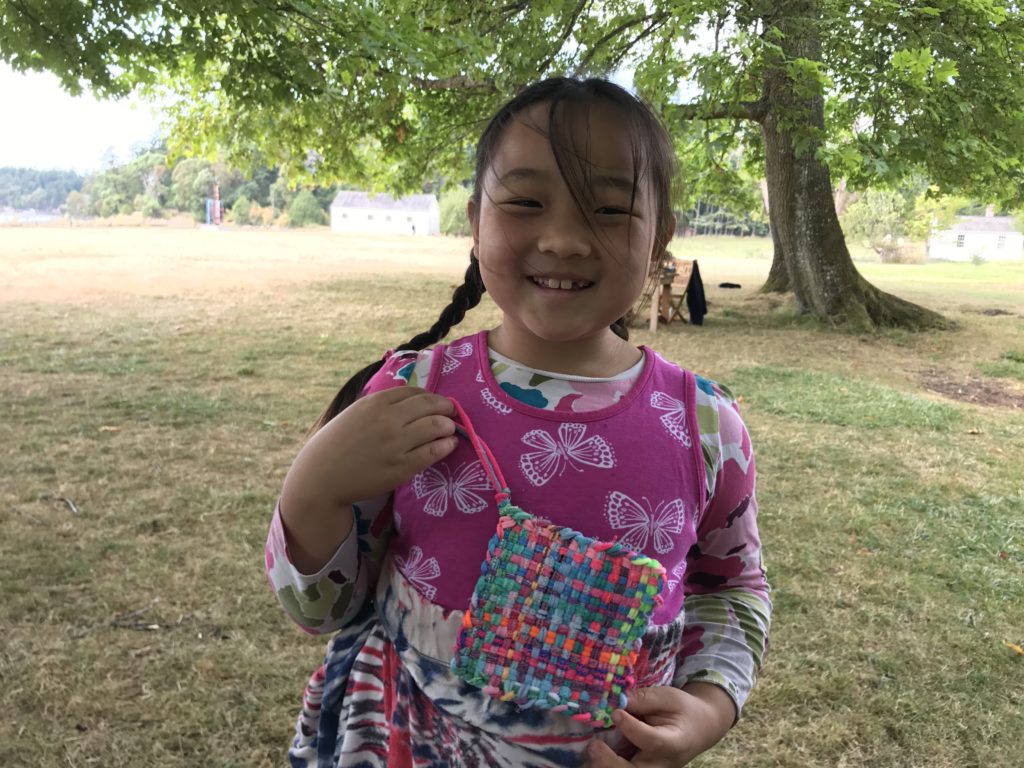
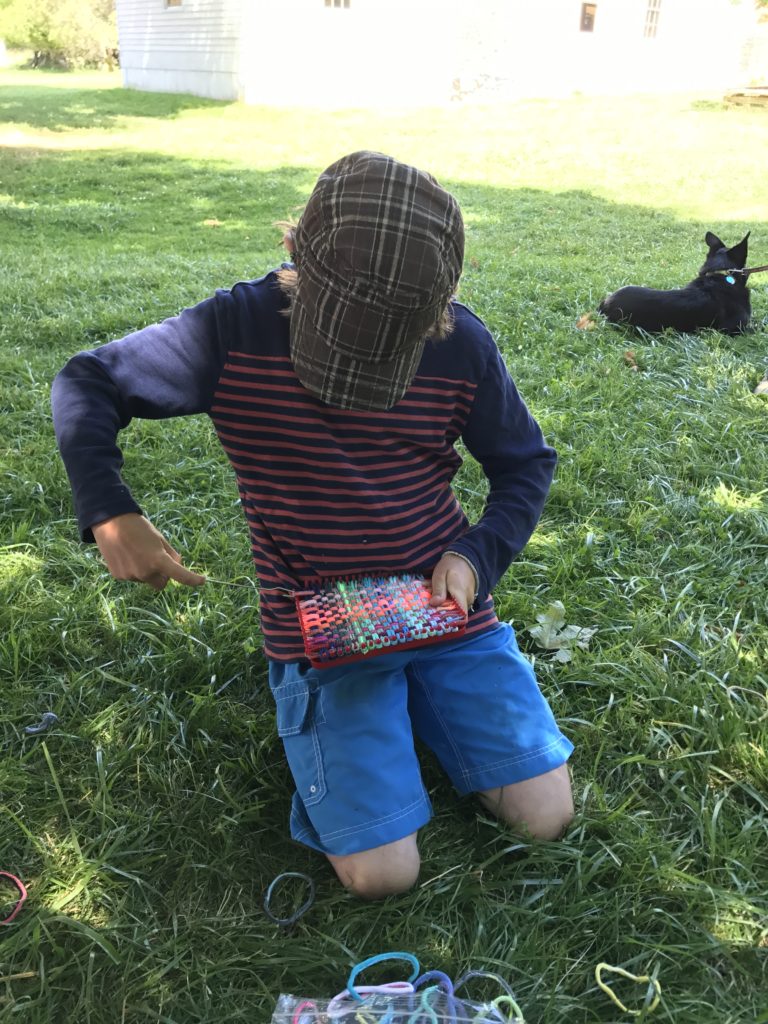
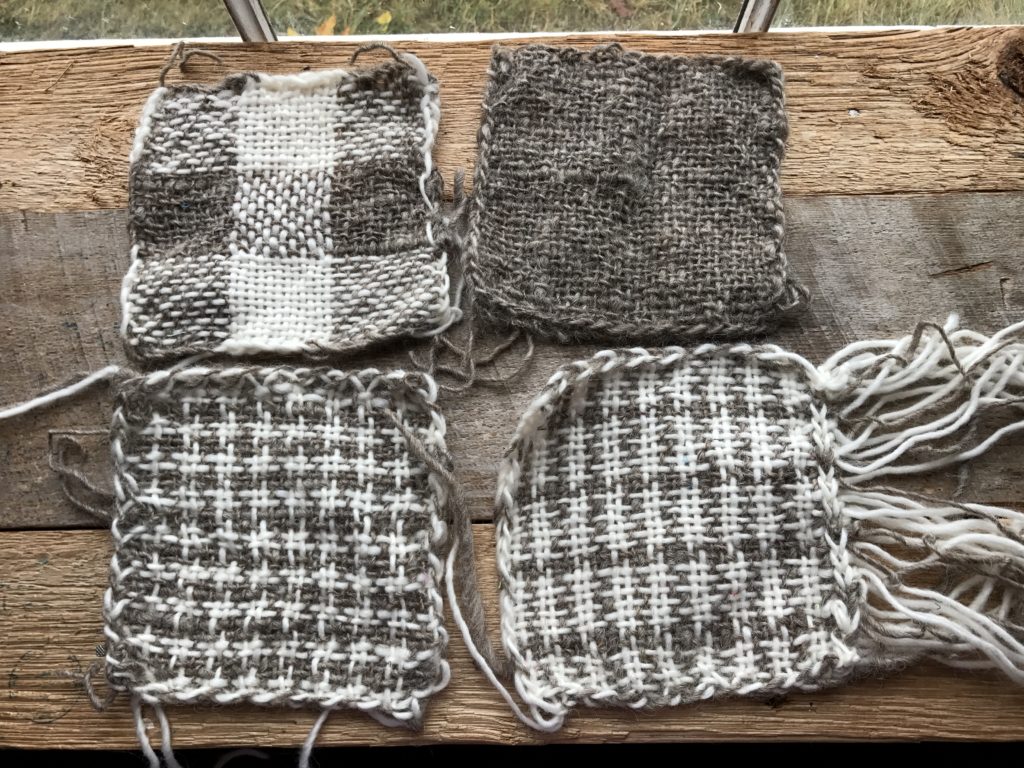
How cool, I remember those kind of potholders. The kids smiles are great. And if I haven’t told you yet, I’m loving the purple dress!
Tom thinks I look like Laura Ingalls on Little House on the Prairie. Not my favorite historical costume, but pretty comfortable.
Loved seeing you at your spinning wheel – all smiles, as usual – and Tom learning blacksmithing. Guess those potholders date most of us:)…looked like “children’s time!” Were they ever happy…
Those pot holders are indestructible. There are probably thousands of them floating around from when we were kids.